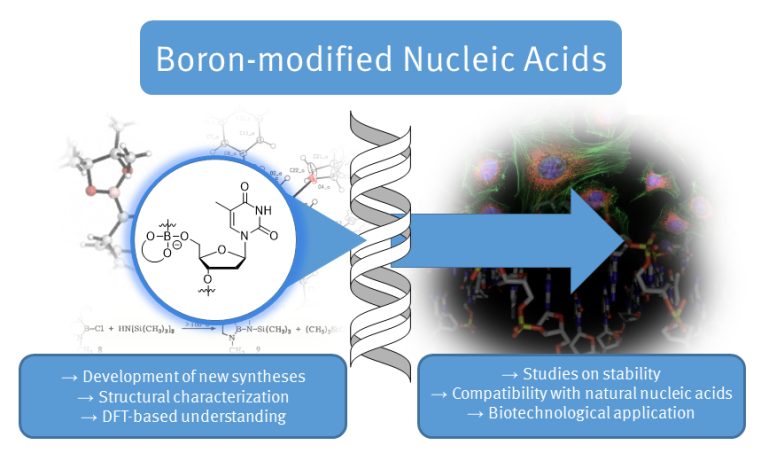
The research focus of the working group lies in the investigation of inorganic modifications of nucleic acids, with a particular emphasis on boron-based functionalities. The goal is to create oligonucleotides that exhibit novel properties through the substitution of characteristic components of nucleic acids. Whenever the existing repertoire of synthesis methods for building desired monomers is insufficient, new reactivities are explored, and Density Functional Theory (DFT) methods are employed to optimize the design. Furthermore, DFT-assisted structural insights into these compounds are indispensable to ensure their compatibility with canonical nucleic acids. These oligonucleotides will find application in the field of biotechnology due to their distinctive backbone, which guarantees precise modulation of stability under biological conditions and, for example, triggers specific interactions with cell compartments.

